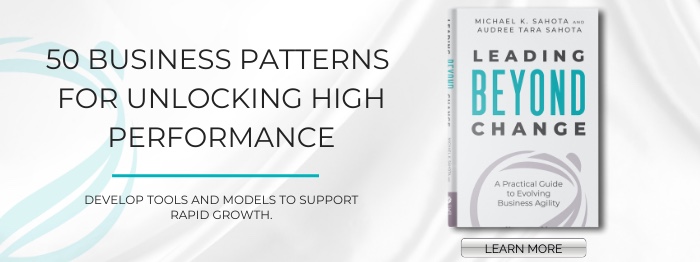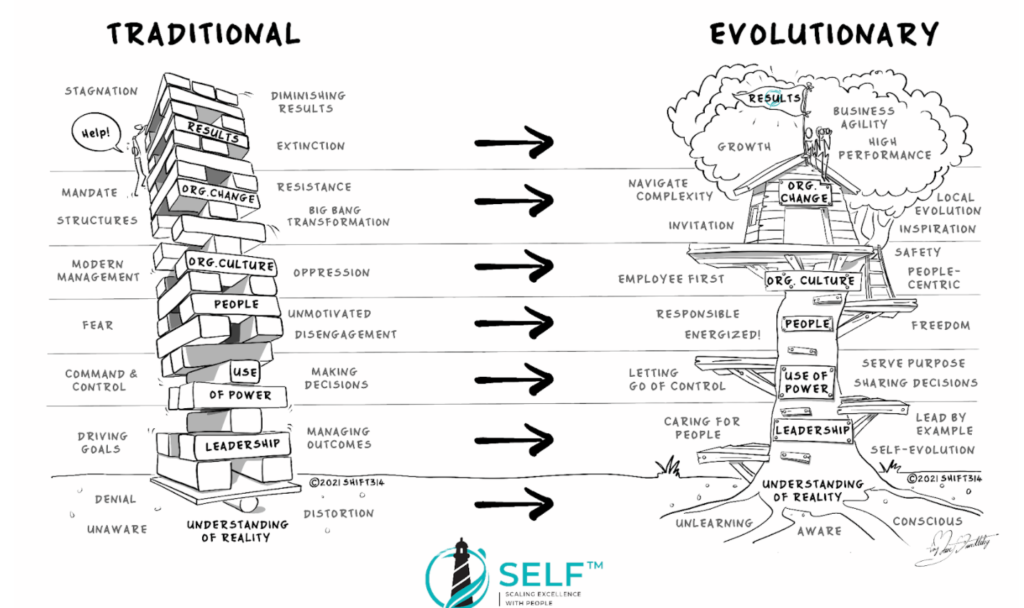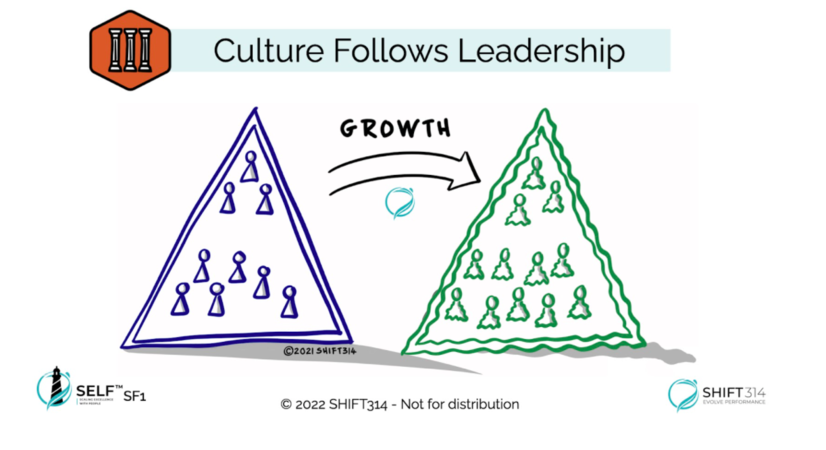Everything you wanted to know about Cultural Transformation but were afraid to ask
What is culture? Culture is the identity, the beliefs and the behaviors of all the people who work within the organization. It’s how we show up around here. It’s how people work together and how people respond during a crisis.
Let’s look at Google’s culture (Disclaimer Alert! We only know Google’s culture from back in the day when Google was hot, new and exciting- we are not sure how it is now). Google had amazing teams, they hired according to culture, they fed their people, and had cool work spaces. They may have had a culture where people worked long hours, yet they were taken care of. People were hired for their talent and for whether they fit in. They and they were engaged and motivated. They loved working for Google. Their culture was one of high performance.
Unfortunately, Google’s early culture is more of the exception than the rule. Most organizations are operating with a low-performance culture. And when executives realize this, they often attempt a cultural transformation that does more harm than good.

What Is Cultural Transformation?
Cultural transformation is a shift from the current cultural state of an organizational system to a more evolved organizational state. Organizations typically seek cultural transformation to unlock organizational characteristics needed for survival, to build an engaged staff and for talent attraction and retention.

Google brought culture into the awareness of organizational performance. They proved that if you take care of your people by creating an amazing culture, the people would take care of the organization, creating a high performing organization. The crux of cultural transformation is about creating amazing workplaces that are very high performing.
One can understand a spectrum of cultures from less evolved cultures (traditional organizational culture) to more evolved cultures. We coined the term, Traditional Organizations and Evolutionary Organizations, in our book “Leading Beyond Change,” as a way to define low performing cultures and high performing cultures. Traditional organizations use command and control to “get” workers to perform, while an Evolutionary Organization is people-centric and collaborative, using an engaged workforce that delivers faster, better, etc.
All organizations are somewhere on their journey of evolution between Traditional and Evolutionary culture, low performance and high performance.

A cultural transformation program is designed to move an organization towards higher performance. It does this by creating a better work environment: a more evolved organizational culture that also produces high performance. An evolved organization means moving beyond tactics and strategy to create a fundamental shift in organizational functioning.
This hearkens back to a popular phrase: “Culture eats Strategy for breakfast.” At SHIFT314 we extend this quote with: “ … And Strategy eats Tactics for afternoon tea.” Tactics, process changes, and strategic plans cannot lead to a fundamental shift in organization performance. Cultural transformation is what’s needed to create the high performance needed in today’s volatile competitive market.
How Do You Successfully Lead a Cultural Transformation?
Culture Follows Leadership
The culture of an organizational system – whether a team, a department, or the whole organization – is a reflection of the leader who holds the power for that group. As such, culture change is 100% a local phenomena – it can happen anywhere, anytime with anyone who has any authority.
Leaders, through their way of being, act as a beacon for the emergence of a new culture within the organizational system. An evolved leader will pull people toward a more evolved culture. A less evolved, traditional command-and-control style leader will act as an anchor that pulls the organization toward a more traditional, lower-performance culture.
Transformation Program = “Trap”
A key factor for undertaking a successful cultural transformation is to drop the word “transformation.”

When a leader tells people that they are going to go through a transformation program, it usually creates fear. While the intention is to create a sense of urgency, it backfires.
Transformation activates a fear response in people.
When an organization announces or is going through a transformation
the level of psychological safety falls.
When the psychological state of all the workers is triggered, there is an important biological response in effect, the blood supply of the frontal cortex drops and the ability to undertake change actually decreases. This is just one example of how transformation creates damage within the people affected by organizational transformation programs.
The usual approach of “driving change” is a disaster. Trying to “make” people go through some sort of cultural transformation applies a Traditional Command-and-Control or Business-As-Usual pattern. This will end up creating a traditional outcome and will lower levels of performance.
The key to success is to create what we at SHIFT314 call an “Evolution Program” that has a radically different foundation. Instead of creating fear, the focus of an Evolution Program is on engagement, inclusion, involvement, and psychological safety so that people are open to learning.

As leaders, our first job is to support the system at its current rate of evolution. This means not pushing or driving to make change happen. Leaders listening to the system, with specifically designed techniques, create desire, find the readiness, use co-creation and gain the “buy in” of all who are affected by a change. As leaders of change, the second step is to help the system develop new evolutionary capabilities to evolve even faster. As we step into more evolved leadership, we reimagine our role as a steward of the system who is there to elevate rather than control it. We call this Evolutionary Leadership.
Organizational Evolution
The consciousness of the change approach limits the consciousness of the outcome. An evolved approach to change is needed to create an evolved outcome. This demands that leaders move beyond traditional oppressive patterns of change to more evolved ones.
Some very specific examples of a high-consciousness approaches include the ability to:
- Navigate complexity
- Model running experiments
- Cocreate the most beneficial path for organizational evolution
- Operate at all times from inclusiveness
- Build leaders at all levels
- Support people’s psychological safety throughout the change process

These are a few models and approaches that take leaders beyond traditional change. Our solution to this is the SHIFT314 Evolutionary Leadership Framework™, which gives leaders the tools they need to evolve into Evolutionary Leaders who can scale excellence with people.
Leadership Evolution
It is important that Leaders model the characteristics of the culture they seek to create
Many organizations cannot move to a higher performance culture because the leaders are the limit of what’s possible. It’s leaders who model the characteristics of the culture they seek.
Modeling the desired culture will create the desired culture. Simply put, when leaders “walk the talk” they model the culture or behaviors they want to see in the workforce. Creating a successful cultural transformation requires the leaders to shift their behaviors first. This may require the growth and evolution of the leaders.

We define Evolutionary Leadership as the choice to evolve oneself and learn the capabilities needed to evolve an organization. When I as a leader choose to evolve myself, I act as a beacon for change.
High performance requires a person or a team to step up, take responsibility, self motivate, create product and services, and deliver. High performance is created by those who are engaged, happy, co- creating together, where joy and purpose at work creates a culture of leaders.
Change is a transmission. Think about who you want to lead your transformation, would you hire anyone to guide your organization to high performance if they are not high performing in their own life? Through our own growth and evolution we develop the capability and the liability to inspire others to grow.
Values Trap
One of the biggest traps of cultural transformation is thinking that a values program will create the desired outcome. Most values programs are actually an act of oppression, telling other people they need to show up in a certain way and follow certain values that they’ve never been asked if they agree with. They’re just being told to follow them.

Most organizations fall into what we call the values trap as an attempt to create cultural transformation. The problem is that they do it in a business-as-usual fashion that creates lower levels of performance.
Of course, it’s still possible to use a values program, but the most important thing is that we use one where the values are co-created equally by all people in the organization and following them is optional.
A healthy values program can also be a group of leaders that create the values. They co-create the values for themselves, willingly choose to follow them, and act as a beacon of the future culture where they live the values every single day, in every single decision.
It’s an Evolutionary Journey
For those serious about cultural transformation, change is possible. The most important thing we can do is to evolve ourselves as leaders. We can harvest our current state of evolution and capability as a leader to unlock change around us. We just need the right tools.



